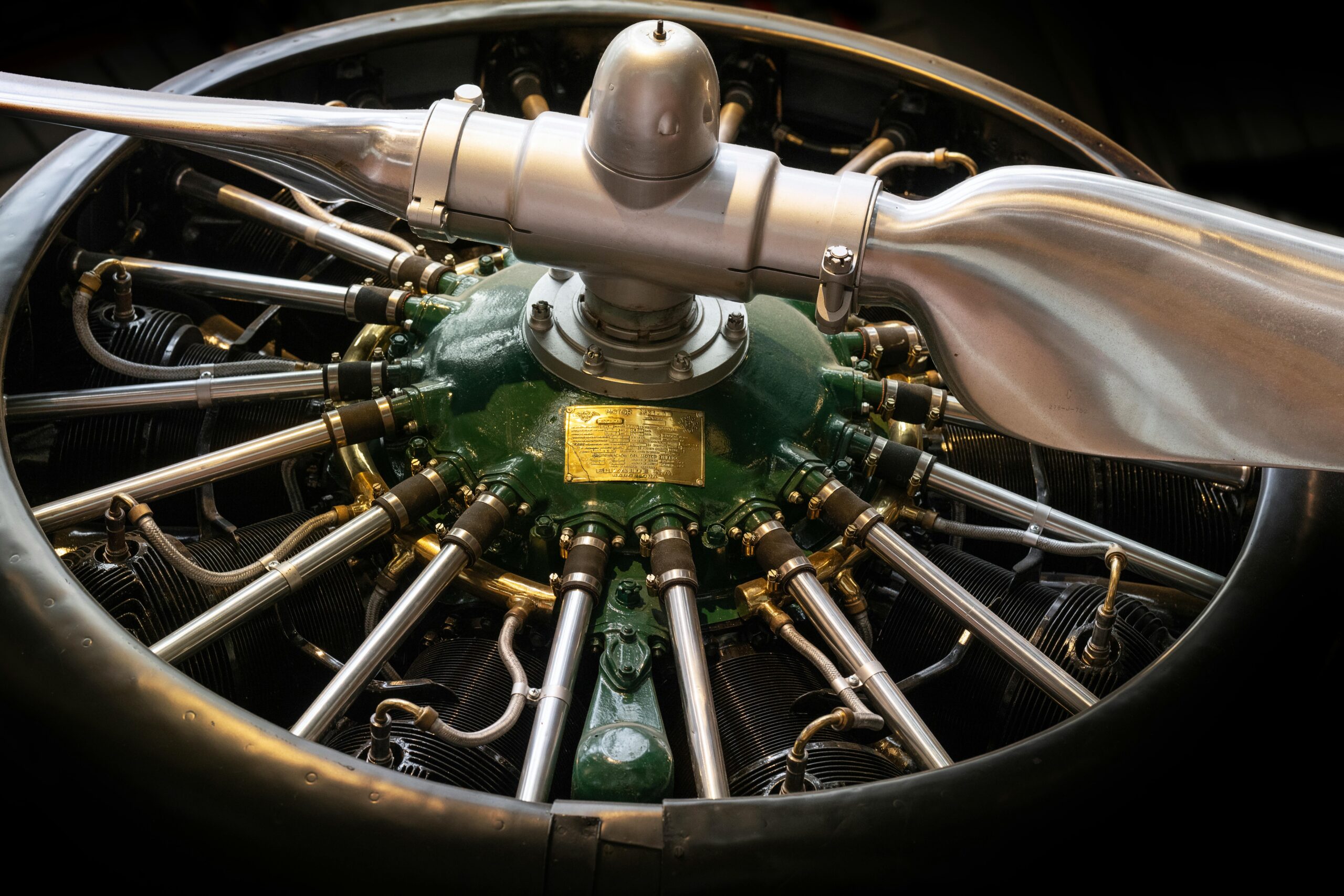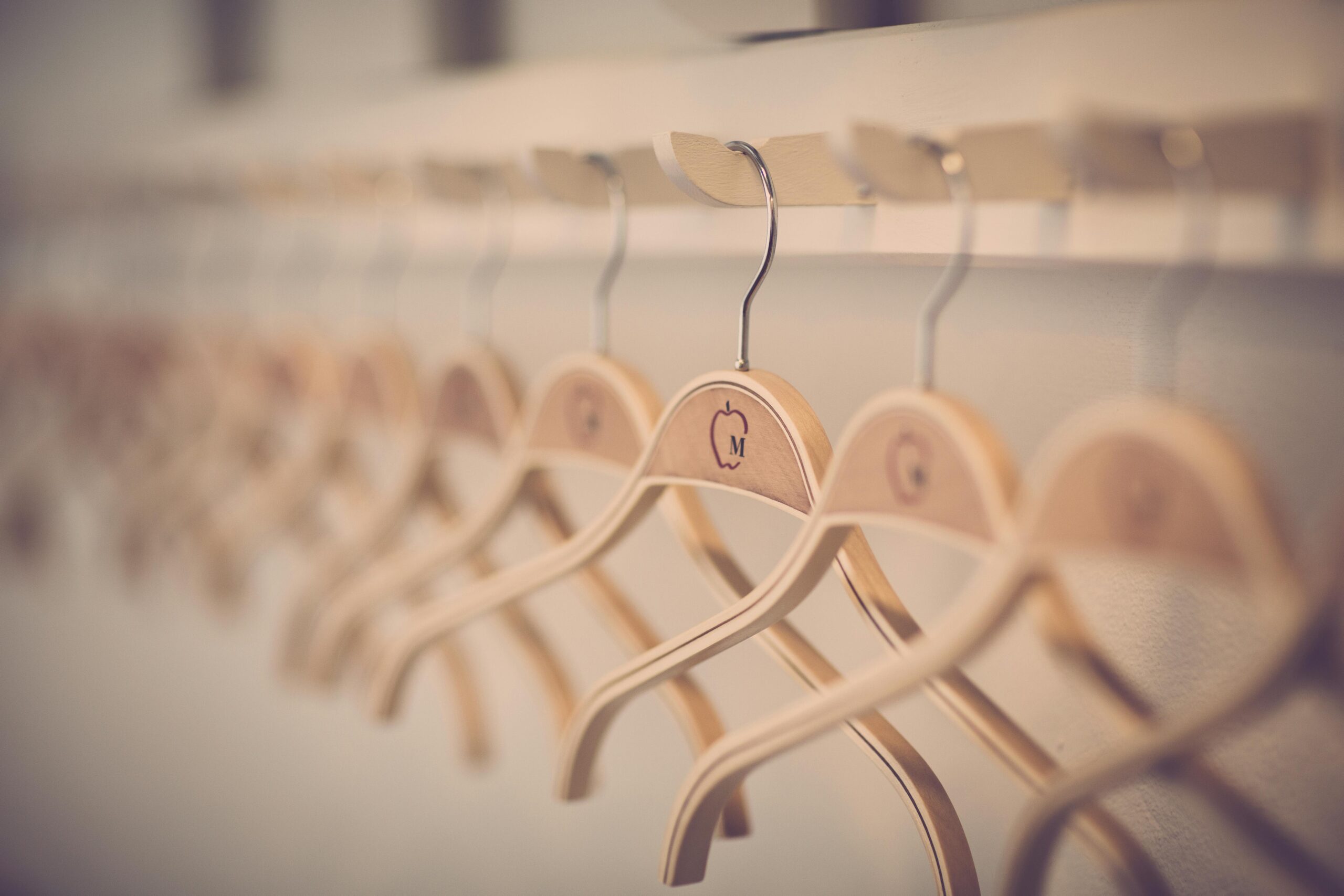Generative AI (GenAI) is developing at lightning speed. Not only in text, but especially in images and video, we are seeing huge leaps in quality. Realistic backgrounds, outfit changes and fully generated campaigns are already feasible today. At Data Science Lab (DSL), we translate these innovations into concrete solutions for the fashion industry.
In this blog, we share four use cases that help fashion brands reduce costs, accelerate content production and expand creative opportunities.
Use case 1. AI-generated locations.
What is it?
We’ll start with something practical: combining studio photos of models with AI-generated backgrounds. AI does more here than Photoshop: lighting, perspective and atmosphere are automatically adjusted so that the model fits perfectly into the new environment.
Opportunities
The identity and look of the model remain the same, this is a big advantage. Clothing and styling remain unchanged, which is crucial for web shops where customers need to see the product. One shoot in the studio thus provides endless variations in different settings. This lowers the cost per photo, saves travel and location costs and reduces CO₂ emissions by eliminating international shoots.
Challenge
AI sometimes has trouble with perspective or scale, which can give an unnatural “AI look. By fine-tuning or re-generating, we solve this.

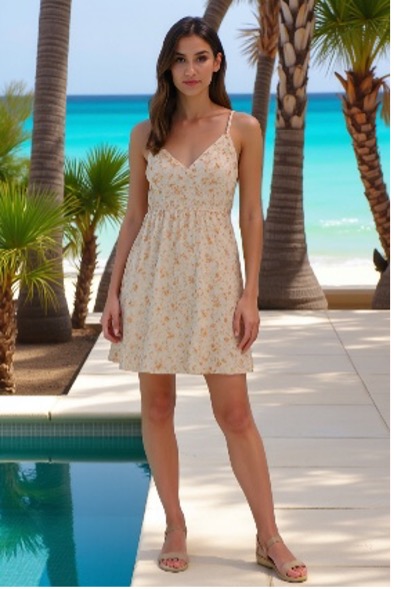
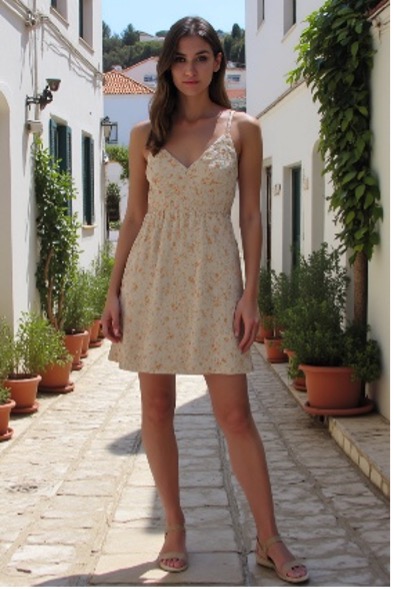
Use case 2 Clothing swap
What is it?
Virtual styling of an existing model or client. One basic shoot is enough to show clothes in different colors, prints or even on different body types and skin tones.
Opportunities
We have experimented with this extensively with model shoots. The result: as a fashion label, you can significantly reduce the number of physical shoots and partially replace them with AI-generated images. A basic shoot is enough to show an item in different colors or prints. In addition, each garment can be instantly visible on multiple body types, ages and skin colors. When working with a model, the model’s identity and appearance can remain the same, making images feel authentic.
Challenge
AI adjusts the fit based on the model, as a result it may differ subtly from reality.
Here is an example of a model with two garments being altered:



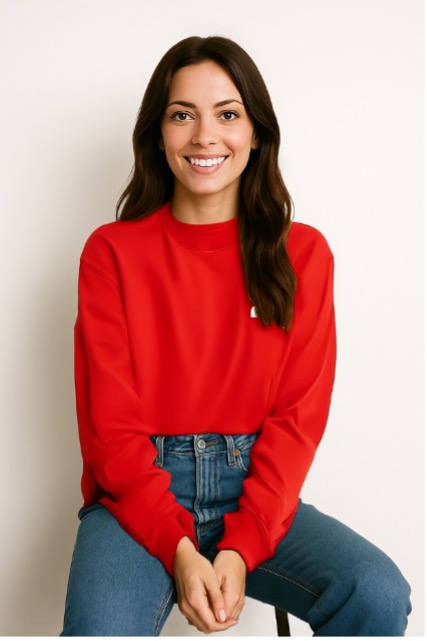
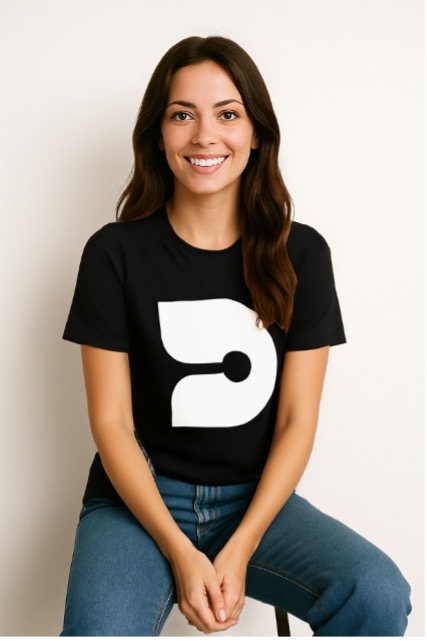
We can see here that the garments are placed pretty well on the model. Sometimes small discrepancies are visible here or details are missing, but in general this works fine to generate new model images or to see how outfits look on customers.
Use case 3 Full Image Generation
What is it?
From just an item of clothing to a complete picture. You upload an item, specify how model and setting should look, and the AI builds a completely new image.
Opportunities
Because the image is built completely from scratch, the result often looks more professional than if you have to edit existing photos. The lighting falls naturally, the model’s posture looks relaxed and the interaction with the background feels believable. In the process, the garment remains remarkably consistent: regardless of the setting, it always comes off well. This approach opens the door to endless creative variations without being stuck with the limitations of a studio shoot.
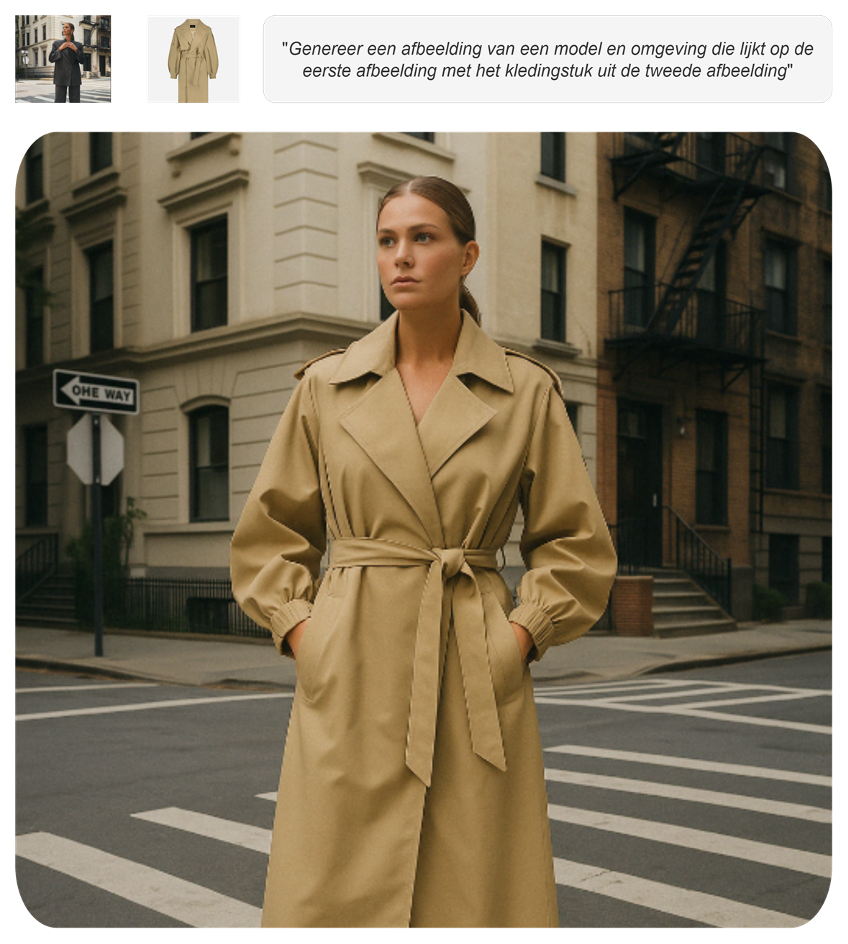
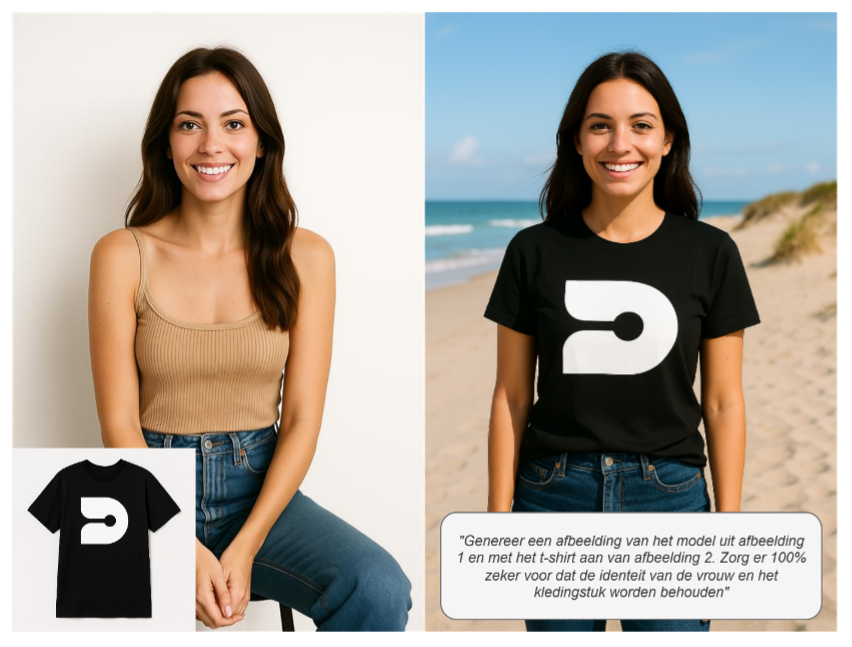
Challenge
The Achilles’ heel is person consistency. If you want one model in multiple outfits, the AI often produces subtly different faces. This is immediately noticeable because humans are incredibly good at recognizing facial differences. New models such as Flux-Kontext Kontext(https://bfl.ai/models/flux-kontext) are making this step by step better by refining existing images rather than generating everything from scratch. Clearly, this technique is evolving at lightning speed and character consistency may soon be possible by default.
Usecase 4. Hyper-personalized shoppable visuals
What is it?
Hyper-personalized shoppable visuals are dynamic images or videos in which products are instantly clickable and tailored to the individual customer. Not a generic banner, but content that adapts live to taste, behavior and context.
Opportunities
Fashion brands can use this to make marketing much more relevant and effective. Think visuals that automatically change depending on someone’s browsing history, weather or location: raincoats in Amsterdam, summer dresses in Barcelona. AI generates thousands of variations at scale, without a design team having to work out each version. By integrating with product feeds and inventory data, you avoid consumers seeing products that are already sold out. Shoppable visuals also shorten the funnel: customers can buy directly from the ad. This results in higher conversion rates, less marketing waste and a better customer experience. For brands working with fast fashion trends, this also offers the chance to respond to hypes in real time without wasting time on production. In short, this is the bridge between data, creativity and commerce that the industry is looking for.
Challenge
The biggest challenge is in scalability and integration. How do you make sure AI creation is seamless with inventory, price and platform? And how do you keep personalization from going too far and feeling “creepy”? Brands need partners that smartly combine technology, data and ethics, exactly where we make the difference.
Conclusion
Generative AI is not hype, but a development that is fundamentally changing the fashion industry. The quality of AI image generation is advancing at lightning speed and is rapidly becoming an integral part of content production. Brands experimenting now are reaping the benefits immediately: lower costs, faster campaigns and more creative space. With applications such as AI-generated locations, clothing swaps and full image generation, fashion brands are already making great strides. The next gamechanger is obvious: hyper-personalized shoppable visuals that seamlessly connect marketing and commerce and radically improve customer experience. Waiting means risking others setting the standard and raising the bar. For fashion brands, now is the time to explore how GenAI can play a role in marketing and production. At Data Science Lab, we work with this technology every day. Together, we translate the power of AI into solutions that fit your brand and target audience. This is how we build tomorrow’s fashion content today.
Want personal advice on how to deploy AI for your organization or brand?
Want more inspiration on what else you can do with GenAI, computer vision, outside of fashion? Check out how we created our Christmas card generator or listen to our podcast here >

